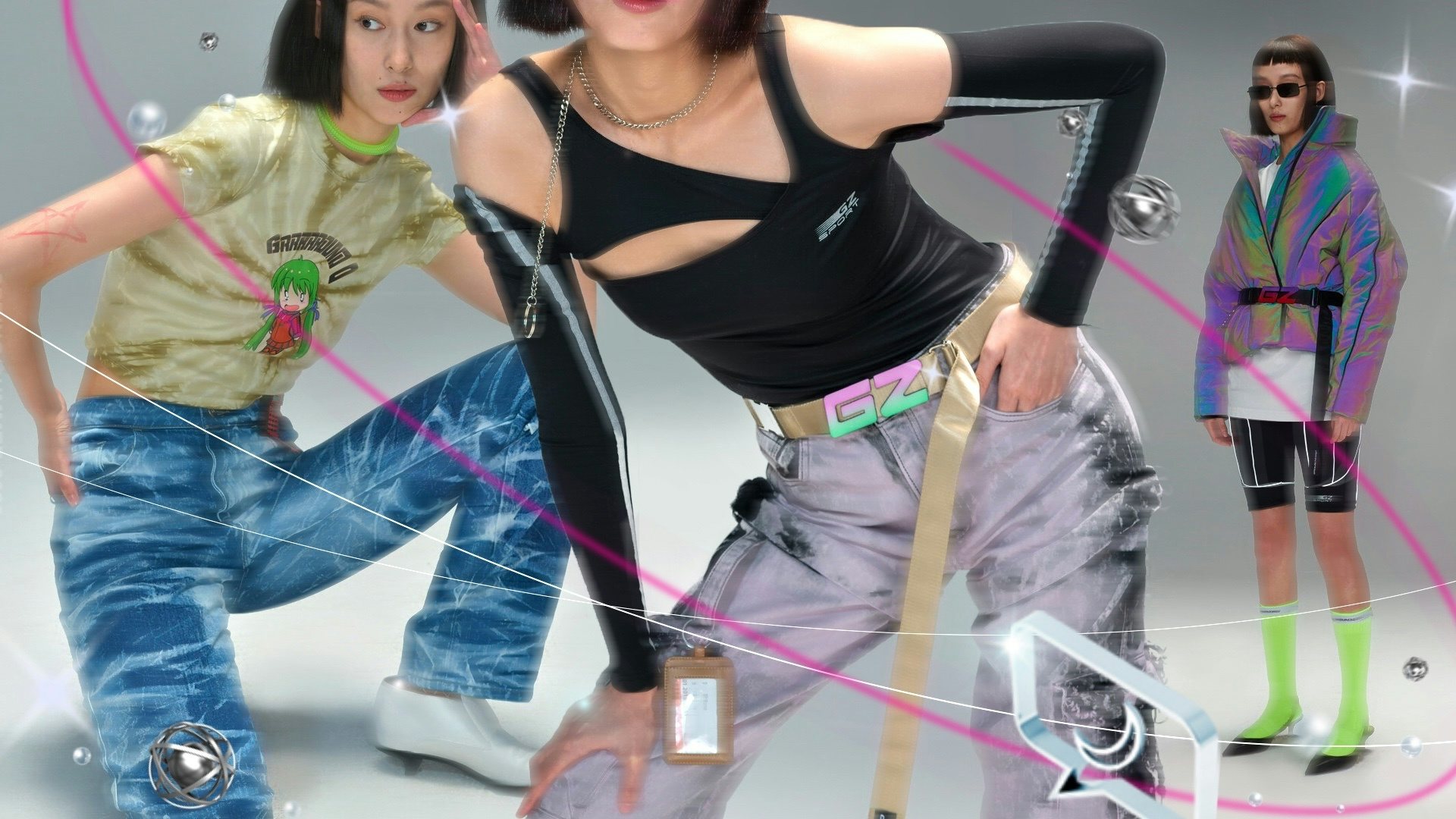Over the last few months, the term “cyberpunk” has unexpectedly gone mainstream in China’s post-COVID fashion scene. Originally a science-fiction genre from the 1980s that described a futuristic and dystopian setting, Cyberpunk has reemerged as a total lifestyle aesthetic for Gen Zers in China. Dreadlocks, silver eyeshadow, shiny clothes, neon colors, and high-tech-inspired photo filters have infiltrated the country’s magazine covers, luxury campaigns, trendy cafés, and social media. While the West remains gripped by the fear of a second-wave epidemic, increasingly clinging to lowkey designs, China’s fashionistas have moved in the opposite direction through techno glamour. In this post-pandemic reality, the two cultures couldn’t be further apart.
Cyberpunk’s futuristic look has now found its way into every element of design, starting with fashion. It can be seen in fashion’s all-important September issues, such as Harper’s Bazaar China’s September issue featuring Latin star Maluma in a cyber-inspired campaign, GQ Men via images of popular idol Yibo Wang wearing cyberpunk looks, and local magazine YoHo!’s cover story on Ning Jing. As such, mass media and pop icons are further diffusing the style for mainstream consumption. In the trending TV show “Street Dance of China,” visuals from the show’s opening, stage design, and guest styling are utilizing the Cyberpunk aesthetic to create a greater impact. Celebrity idols like Kris Wu and Cai Xukun, who are the respective brand ambassador for Louis Vuitton and Prada, both created social media buzz by showing up in dazzling, high-tech-style outfits.
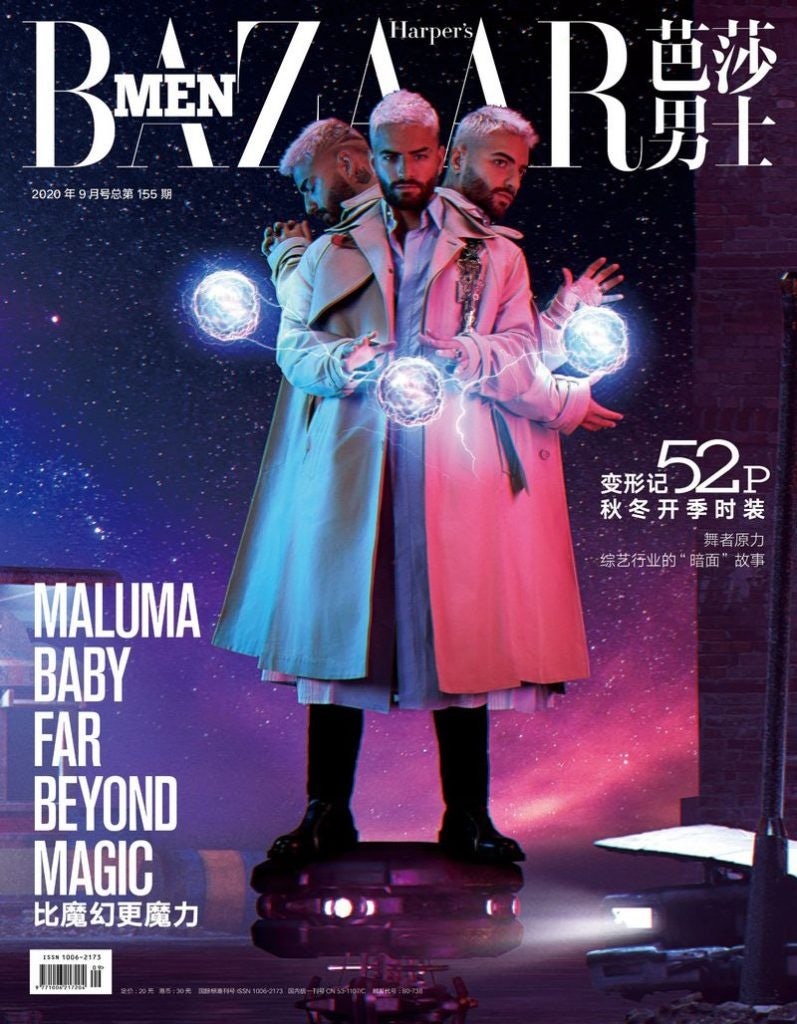
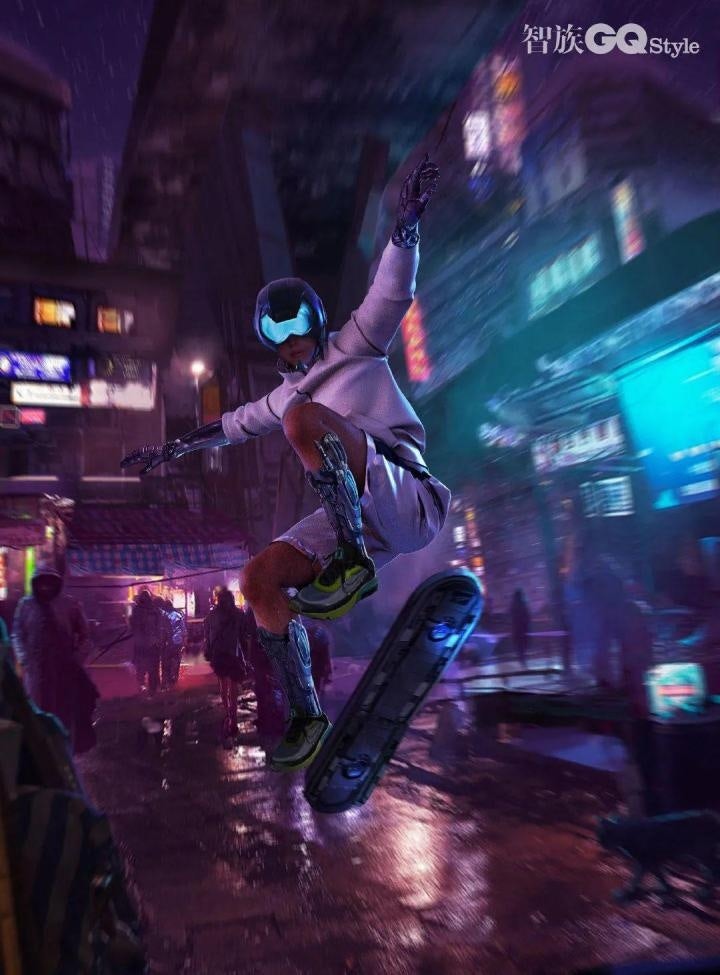
The Cyberpunk aesthetic has also become a hot concept for luxury and beauty marketing. In August, the Kering-owned jewelry house Qeelin dubbed its brand ambassador, Chen Feiyu, a “Cyberpunk boy” in a campaign post that showed Chen with perfectly smooth (and heavily photoshopped) skin.
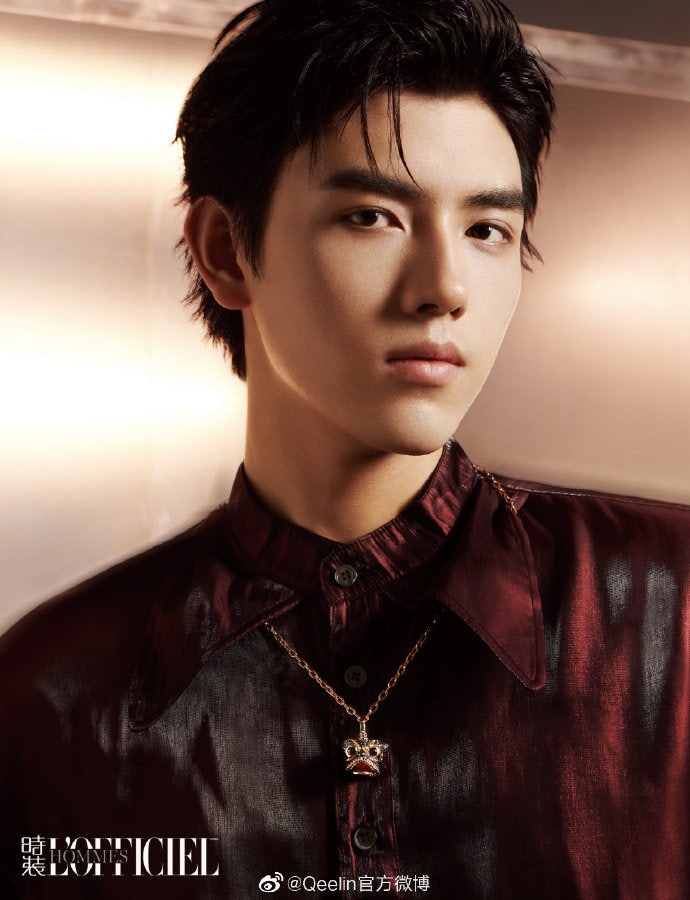
Meanwhile, skincare brand Olay used Cyberpunk as the central theme of its new campaign, presenting its ambassador as an expressionless machine-human in an ageless future. And across social media, Cyberpunk has morphed into a trendy way of life. Under the hashtag #FuturisticCyberpunkFace, youngsters are sharing Cyberpunk makeup, hairstyles, photo filters, and where cyberpunk-themed cafes are located in their cities.
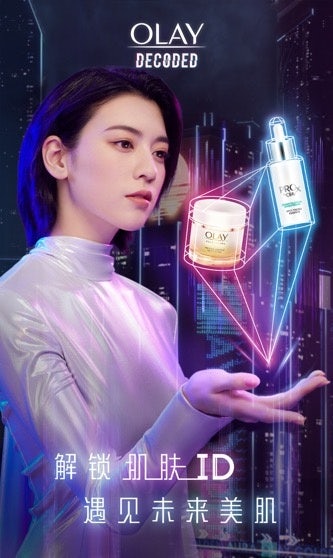
The original Cyberpunk moniker was a cynical cultural expression, born in an era of growing global capitalism that led to suspicions of the ultra-rich and technocrats. Now, three decades later, this US-born subgenre has become an actual depiction of urban Chinese life. The usual Cyberpunk film setting features sophisticated urban infrastructure with mile-high skyscrapers, neon billboards, and flying cars, against a dark, poverty-stricken backdrop that somewhat resembles a modern Chinese city containing futuristic symbols and contrasting social strata. Numerous videos and films that use urban China as a Cyberpunk stage set have widely circulated online, which only reinforced China’s association with the term.
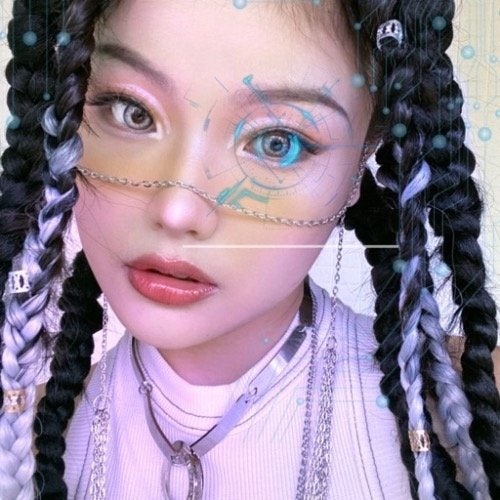
But today, Cyberpunk is seen by the Chinese mainstream as an aesthetic of pure social progress and high-tech glamour. It has, paradoxically, become a positive way to champion technology in China.
Weibo fashion KOL @Audiation told Jing Daily that “everyone coincidentally chose cyberpunk visuals for the September issues this year, but most of them only show Cyberpunk as a glamorous idea. They present ‘human-machine’ subjects, perfectly polished accessories, dark blue and purple backgrounds, glitches, and illusory art.
On social media, the keyword #Cyberpunk has become interchangeable with the idea of a pure visual spectacle. In a long Weibo thread titled, “what does Cyberpunk means to you,” responses from trend-savvy netizens varied. “It is an edgy aesthetic,” “it makes you instantly look cool,” and “its sense of technology feels upscale” were just a few of the responses. On the lifestyle app Little Red Book, there are over 10,000 posts from youngsters turning Cyberpunk into an outfit style, a décor style, a selfie filter, a tattoo graphic, or even a bar-hopping theme.
Weibo fashion critic @Fashion_Mok attributed the rise of Cyberpunk to China’s overcrowded digital environment. “Today’s audience always needs newer, more visually striking shots to stimulate their senses,” he told Jing Daily. “The usual subject matter, even the well-made ones, can no longer attract their attention. As a result, more magazine editors have leaned towards glittering genres like Cyberpunk to attract more eyeballs, which now has become a pop phenomenon.”
Although the concept of Cyberpunk isn’t a new idea in fashion, the resurgence of its appropriated version in China offers important messages for brands. While the consumption ethos of “cocooning” is trending across most of the Western world, young Chinese are choosing to fill their wardrobes with shiny, techy clothes. If fashion is effective in displaying different social dynamics as a mirror of its time, it is now showing how divided the West and China have become in the post-COVID era: While the usually wilder Western fashion scene has retreated into restraint, its Chinese contemporaries are demanding more lavishness.
But most notably, the rise of Cyberpunk shows how the young Chinese fascination with technology is growing. It discloses a mainstream Chinese belief that prosperity should be built upon high-tech dominance and that the idea of “cool” must involve modernity and progress. It also reveals how the youth of China want to receive international recognition for their country as a shining example of modern advancement. As such, luxury and fashion brands trying to win over Chinese Gen Zers in the post-COVID era will only succeed if they commit to the country’s selective vision of progress.
